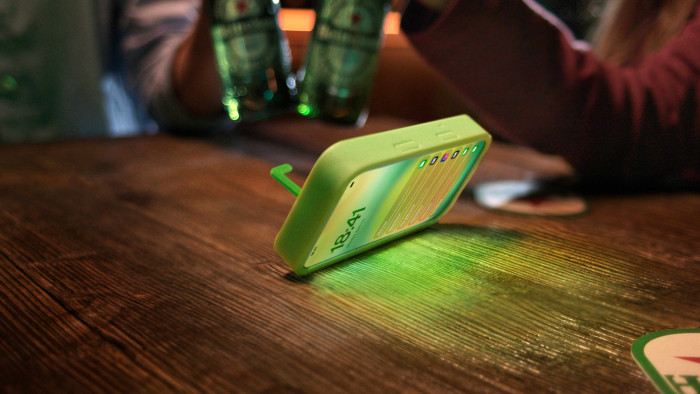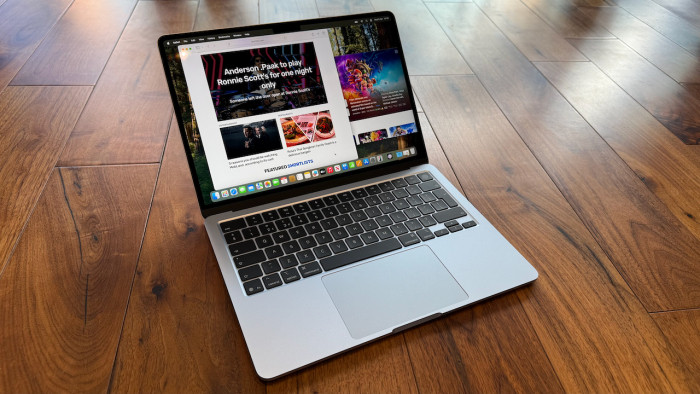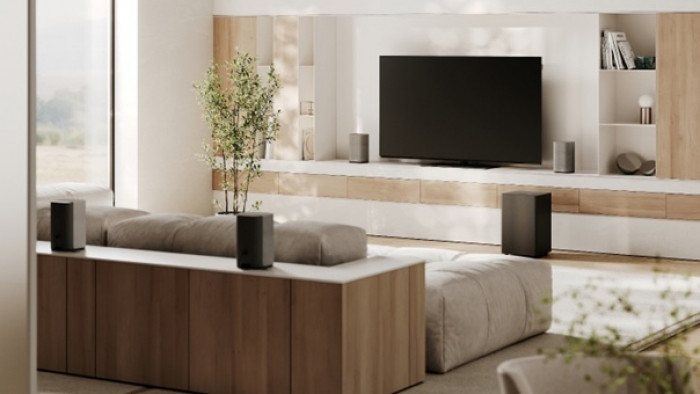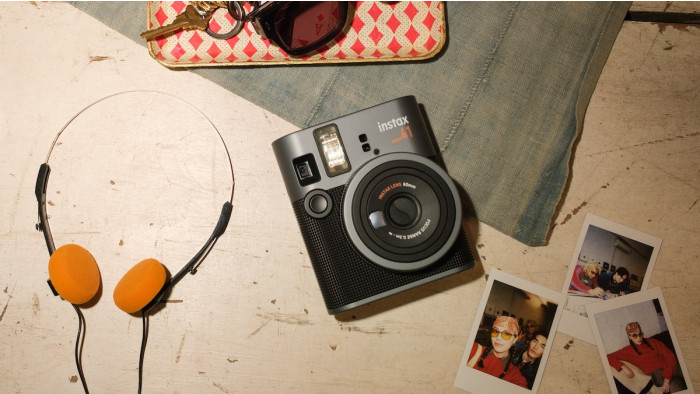Best mid-range phone 2020: ultimate smartphone camera comparison
Take the best pics without spending a fortune with these best mid-range smartphones.

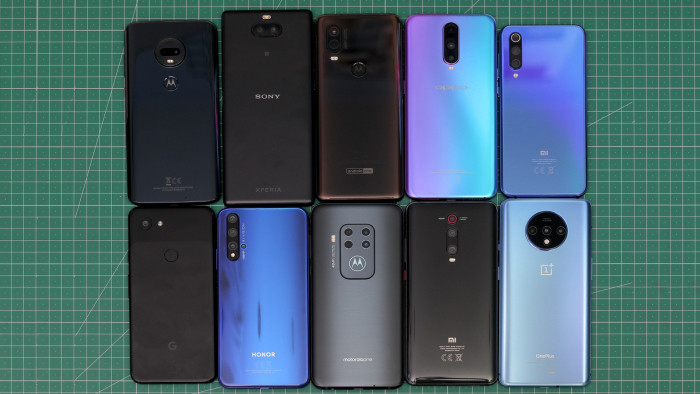
If you’re tasked with creating a fantastic ice cream sundae but have a three-ingredient limit, what would you load it up with? That’s what being a phone manufacturer is like, especially when putting together a mid-range phone.
UPDATE:We are currently updating this guide to include a number of new phones that we think are deserving of the best mid-range smartphone crown. Read the reviews of the phones we are considering below:
There’s a fixed budget, so expensive luxuries are out of the question. But if you play your cards right, you can still make a taste sensation.
We’ve selected ten of the best ‘taste sensation hopefuls’ from the mid-range camera phone world, each aiming to balance price and performance perfectly.
The Honor 20, OnePlus 7T, Oppo RX17 Pro, Xiaomi Mi 9 SEand Xiaomi Mi 9T all represent hot brands that have flourished in recent years, and all five phones have three or more cameras.
Meanwhile, Motorola has no less than three entrants, which is unsurprising given how many mid-range phones it launches year-round. These range from the dual camera Moto G7 Plusand One Vision through to the quad camera One Zoom.
As for Sony, its Xperia 10 Plus’s super-long 21:9 screen is matched with a 12MP+8MP dual-snapper, while Google has squished its sensational Pixel 3 camera into the much more affordable, less specced-out Pixel 3A.
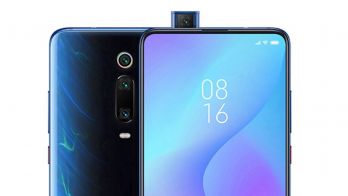
While it isn’t the cheapest smartphone on-test, the Xiaomi Mi 9T Pro’s sensational value goes way beyond its camera. This phone features an all-screen front, incredibly premium glass and metal design and sensationally good specs, from a top-tier flagship processor to a huge battery. That it takes great pictures too is just the icing on the cake.

The expert's view
While it didn’t win every round, the Pixel 3A was the most consistent camera out of the ten we tested. The OnePlus 7T, for example, was the best at background defocusing when the subject wasn’t a person.
Meanwhile, the Honor 20 performed like a champ in both the zoom and ultrawide rounds (despite not having a zoom camera). The Mi 9T Pro didn’t even ‘win’ at anything, but ranked second or third in almost every test.
The Google Pixel 3A’s simplicity is what makes it so special. It takes an excellent picture and it does so with just one focal length.
- Need your phone to take the best photos? Check out our favourites for best camera phone
- And if you're a Samsung loyalist, check our our picks for best Samsung phone
The shortlist: best mid-range camera phones

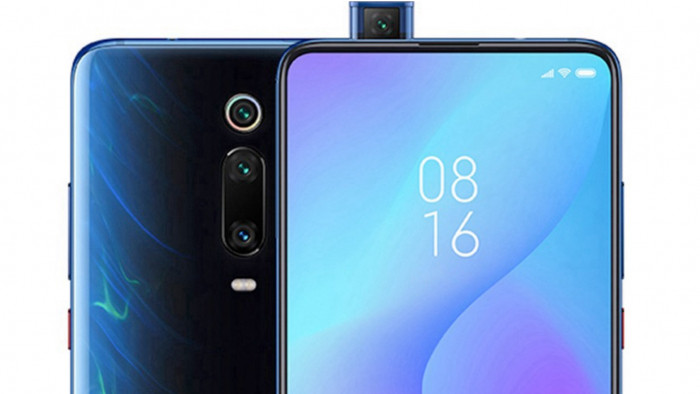
The Xiaomi Mi 9T Pro doesn’t make much sense, costing just £399, but delivering across-the-board flagship specs. It features a triple camera, edge-to-edge display, huge battery and sensational curved glass design. It even bypasses the need for a notch or punch hole front camera by featuring a futuristic pop-up selfie cam, so looks incredibly immersive.

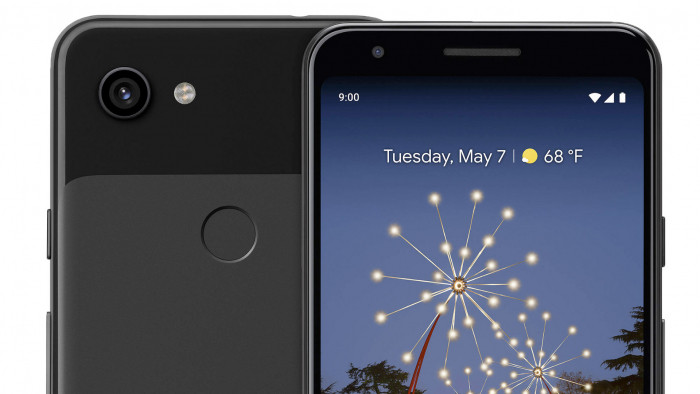
While it doesn’t have a great deal of power, the Pixel 3A is loaded up with a truly special flagship camera with the same capabilities found on the original Pixel 3, including a capable night mode. While it’s the only option on-test with just one camera, given its performance in our best camera phones comparison, we’re optimistic the 3A will hold its own here too.

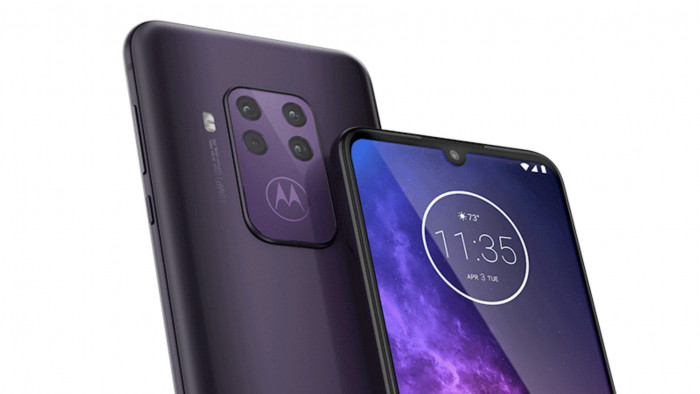
A quad-camera for under £400? It’s got to be the Motorola One Zoom. This phone has a great screen, huge battery and slick interface, but the camera is the headline feature, going toe-to-toe with the likes of the Samsung Galaxy S10 and Mate 30 Pro when it comes to zoom and ultrawide capabilities - on paper at least.

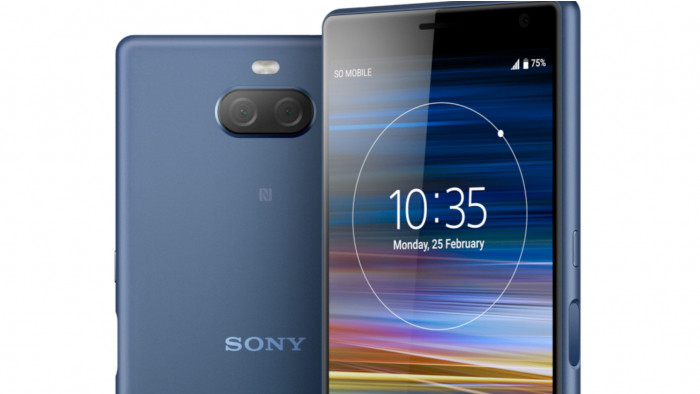
Sony’s ultrawide Xperia 10 Plus screen is a striking viewfinder for its dual-camera, complete with object tracking, smart scene-detection and 120 frame-per-second slow motion video. Glancing over its spec sheet, at £349 it’s pricier than we’d expect, given how little power it packs. Coupled with a small battery and out of the gate, this Xperia is on the back foot.

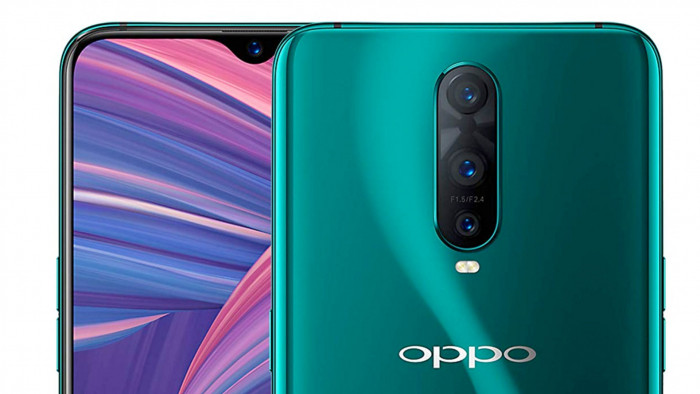
Oppo may have pulled focus in 2019 with its Reno-series, but the midrange RX17 Pro also hit the shops with its mesmerising two-tone design and fantastic looking all-screen OLED display. Its triple camera set-up doesn’t get you closer or further away from the action though; instead, it’s loaded up with plenty of depth-sensing tech.

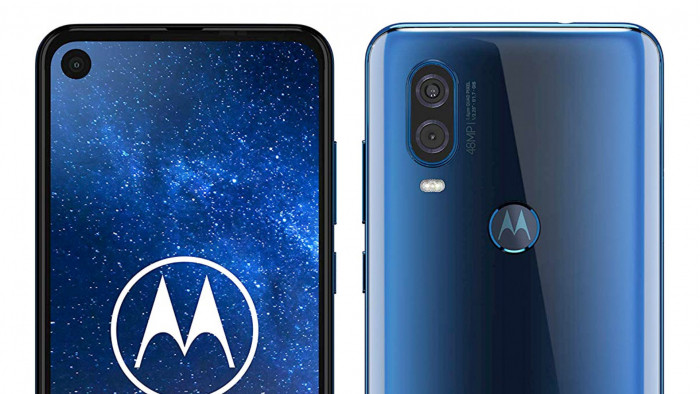
48MP doesn’t come in a more cost-effective package than the Motorola One Vision, a sleek, tall dual-camera phone which combines 21:9 design and a high-resolution dual-camera. It also runs Android One, so features a smooth, stock version of Google’s mobile system guaranteed to get updates for two years, so it’s nicely future-proofed too.

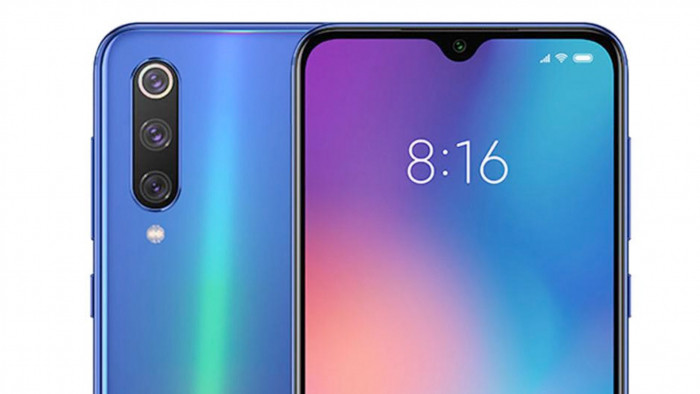
Cheekily, but aptly named, the Xiaomi Mi 9 SE is the closest an Android phone gets to iPhone SE status. It’s small, has an eye-poppingly good AMOLED display, three cameras around the back and premium glass and metal design. The fact you can get it for under £300 if you shop around makes it an obvious choice for fans of smaller phones and great value.

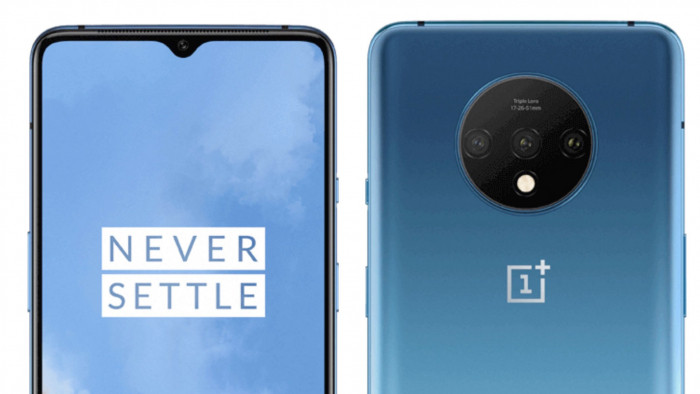
The OnePlus 7T is so fresh, we don’t even know how much it will cost yet, but one thing’s for sure, it’s a beauty. It’s taller than the OnePlus 7, has a brighter, smoother screen, a striking new matte finish and a bold, circular camera surround. Combined with three cameras and the most powerful processor on-test, we have high hopes.

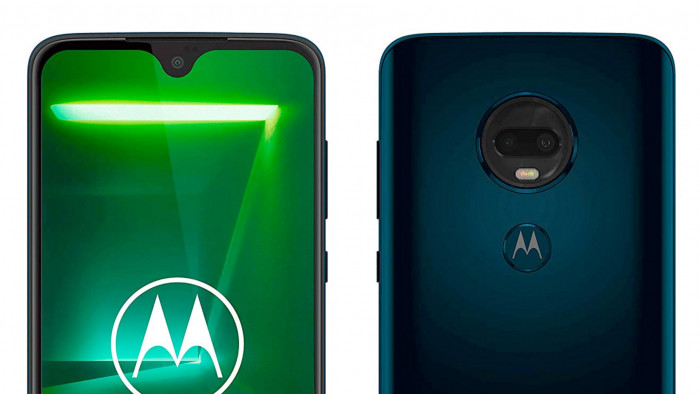
Motorola’s G-series always represents great value, and the G7 Plus is the jewel in the line’s crown, with a glass back, super-fast Turbo Charge tech, taking it from 0-100% in under an hour and a dual camera, loaded up with optical image stabilisation. While it may not have flagship power, with a great screen and stellar battery, it’s a much-loved midranger.

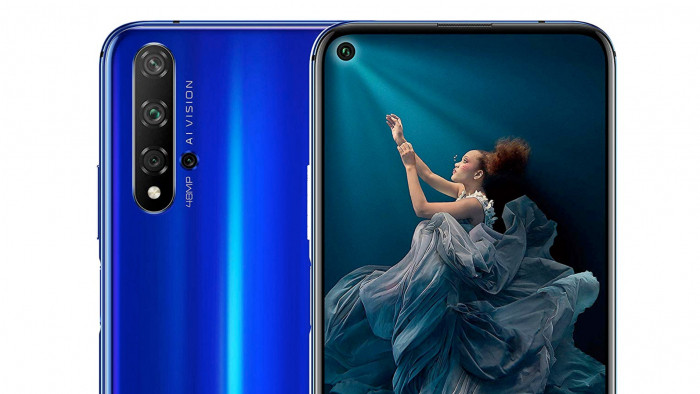
With its three rear-cameras and a depth sensor, the Honor 20 is nice and versatile, with wide and ultrawide cameras, and a novel macro camera for close-up shots. It’s also a great phone thanks to flagship-grade power, and its selfie camera is hidden in a punch-hole at the top, just like on the Samsung Galaxy Note 10-line, so no need for a notch here.
Best mid-range smartphone: how we selected
Each of these ten camera phones does something different with imaging, but competes on price. That isn’t to say they’re all cheap and cheerful handsets, but they represent the best value around from their respective manufacturers. The Motorola One Zoom, for example, has four cameras, with a dedicated depth sensor for better background defocusing. Another, the Xiaomi Mi 9T Pro can capture 960fps slow motion footage as well as 4K video at a silky smooth 60fps.
That said, they also have common strains of midrange DNA. These aren’t super-cheap phones and have at least Full HD screens and smooth interfaces. They also all run Android, given the fact no current-generation iOS device costs less than £600, and all record 4K video.
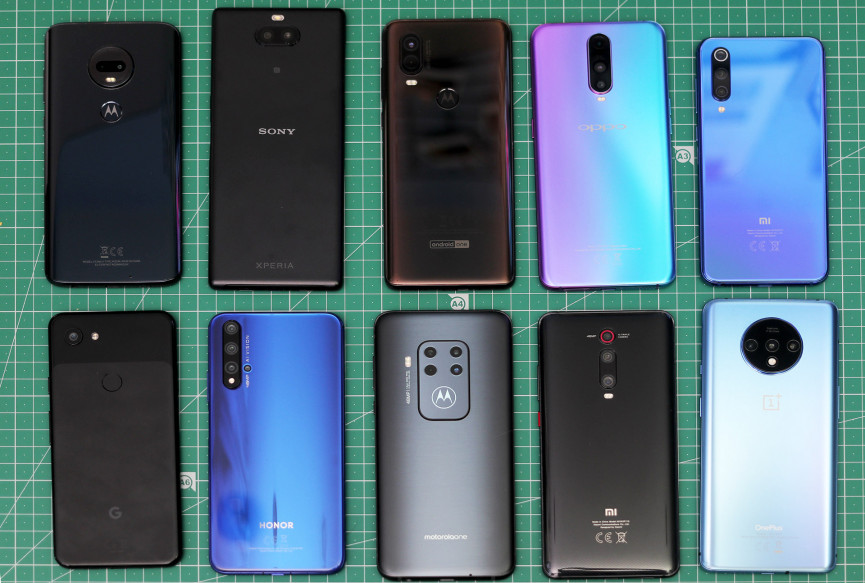
Each camera also has its own app and range of shooting modes. Even two phones from the same manufacturer might vary in this respect. For example, the Moto G7 Plus doesn’t have Night Vision - Motorola’s night mode, but the Motorola One Zoom does. Additionally, while they all run Google’s operating system Android, the Google Pixel Camera interface is reserved for Google Pixel phones only, and is loaded up with its coveted Night Sight.
All the phones on test other than the Pixel 3A give you the option to take the driver’s seat and fire-up full manual controls, so shutter speeds can be slowed right down to capture artistic light trails and long-exposure landscapes.
Looking at all ten phones, it’s like a very messy Venn diagram, with plenty of overlapping features but enough to differentiate them to make each warrant a spot.
Best mid-range smartphone: how we tested
There are a standard set of pictures most people will capture when given a camera: macro (close-up photography), portraits, landscapes and action shots to name a few. These are captured across a range of lighting conditions and zoom ranges - and are the kinds of scenes we worked to emulate in our comparative review.
Portraits, for example, can be shot in automatic mode, or portrait mode. If you remember to fire up portrait mode, the phone will flatter faces by softening skin and blur out the background to mimic shots taken on a DSLR. We shot portraits in both modes before we picked them apart. We also captured them in good light, very low light, and finally, with night mode switched on.

How close a phone can get you to the action is another factor likely to sway your buying decision. The Motorola One Zoom, for example, has a 3x optical zoom. Meanwhile, the Honor 20, Pixel 3A andOppo RX17 Pro only have digital zoom.
Digital zooms are technically inferior as they simply crop into the full-sized image and create a lower resolution shot, but specs aren’t everything, with our Honor 20 beating the competition in our zoom tests in well-lit scenes. Meanwhile, optical zooms use separate lenses that act like magnifying glasses, so the image the phone captures is both zoomed in and "full resolution". These tend to outperform digital zooms in low light.
As for selfies, they’re a big deal, and not just for social media fans. Lifetime milestones like wedding receptions and graduation ceremonies see parents and grandparents huddling in front of selfie cameras across a range of lighting conditions. With plenty of variety on test, from a resolution-tastic punch hole 32MP front-camera on the Honor 20 to a pop-up module on the Mi 9T Pro, how to best hide the selfie camera has shaped the design of each of our midrangers, and we tested them thoroughly.
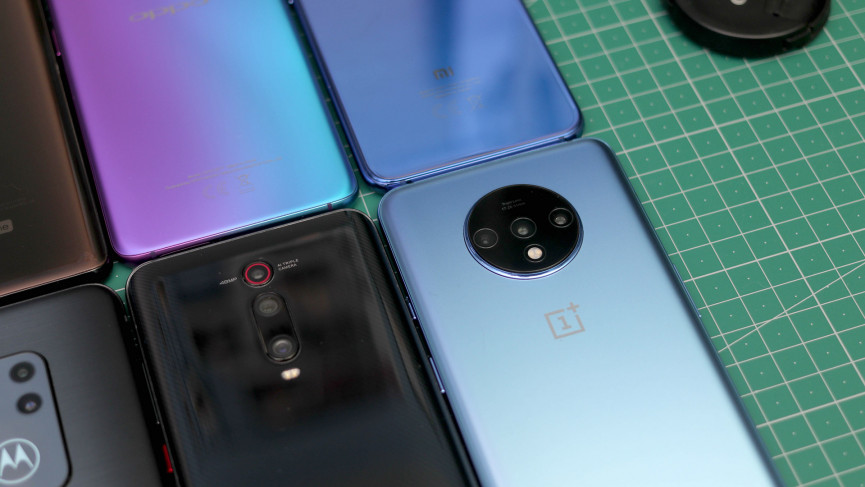
There are also other, more practical, factors to consider. The Honor 20, OnePlus 7T and Xiaomi Mi 9 SE don’t have headphone jacks, for example, so if you’re recording footage and need to listen to it on the fly without using the phone’s loudspeaker, you’ll need wireless headphones or a converter. Additionally, the Google Pixel 3A, Motorola One Zoom, OnePlus 7T, Xiaomi Mi 9 SE and the Mi 9T Pro all have OLED screens, so have more zing and depth when looking back through your photos.
With so many variables, and each phone excelling in a different way, our tests aimed to be both exhaustive from a photography point of view, and holistic from a usability point of view.
Best mid-range smartphone: Test results
The first thing we did with the phones was take a picture of a person with portrait mode both on and off. Once a flagship feature, nowadays any mid-ranger worth its salt can defocus a background, and artificial background blur was a prerequisite for our shortlist.
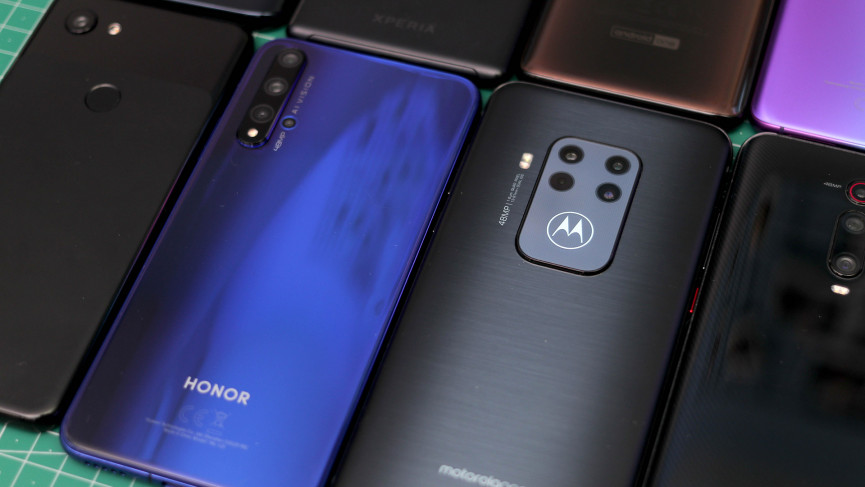
Four of our phones on-test tighten up framing when you fire up portrait mode, going from a wide, roughly 26mm to a tighter 52mm. This makes sense from a traditional photography point of view, emulating a roughly 50mm focal length, which is an ideal distance for pictures of people, and the reason a 50mm lens is often referred to as a portrait lens. That said, by applying a zoom, the phones also run the risk of degrading the picture quality by cropping in.
Specifically, the Pixel 3A, OnePlus 7T, Xiaomi Mi 9 SE and Mi 9T Pro, and the Xperia 10 Plus all apply the crop. Both the Motorola One Z0om and the Honor 20, meanwhile, shoot portraits with the widest angle of our ten.
The Pixel 3A stormed this round, with the Motorola One Zoom coming in second and the Honor 20 in third place. While the Honor 20 is the most flattering of the three camera phones, it smoothes-out skin too aggressively. Both Google's and Motorola’s phones captured more detail, especially around small wrinkles.

The reason Google’s Pixel 3A edged ahead was down to the richer skin tones it picked up, and that it applies more realistic blur than the competition, giving subjects subtle, but striking, pop.
Drop the lights but stick with a portrait theme, and things get very messy, very quickly. It’s clear that phones without a dedicated night mode are totally outgunned here - specifically the Moto G7 Plus and the Xperia 10 Plus.

The OnePlus 7T excels in this area, with a dip into the settings revealing an option to extend its night mode to up to 32 seconds if you have a tripod or steady surface to hand. Even without that feature fired up, its vanilla night mode captured the best skin tones in our test. The Pixel 3A was a close second, with comparable detail but slightly off white balance, and the Mi 9T Pro third.
Night-time landscapes produce an almost identical result, only with our third place award going to the excellent Honor 20, which was able to capture more detail than the Mi 9T Pro.

A great trick to make any shot taken on a smartphone look a bit more expensive is to get very close to your subject. Macro photography forces the lens to focus on the foreground and creates what looks like a shallower depth of field; in other words, macro shots have tonnes of background blur, even in automatic mode
To test the phone’s close-up capabilities, we pitted them against a plate of fruit. A peach was our main subject. On every phone tested, we had the peach positioned around 6cm from the camera, and tapped the stem end. On first glance, the Motorola One Zoom picture looks excellent - nice and sharp, it focused exactly where we wanted it to, and the shot is loaded up with pop.

Look closer and it has clearly been sharpened a lot, and the saturation boosted. That isn’t to say it looks bad, it just doesn’t look natural, or give enthusiasts wiggle room to edit the photo themselves. The Zoom’s peach would be perfect to whack straight onto Instagram, but it isn’t our favourite.
The Google Pixel 3A took a very different approach. Its captured fruits look tempered, but get close and detail holds up nicely, with the peach skin fuzz looking aptly soft and fuzzy. It was also the most accurate at focusing on the point we tapped, along with the One Zoom. An honourable macro mention goes to the Mi 9T Pro, which produced a more subdued image than the competition, though packed plenty of detail.
If you want to take selfies, then the Pixel 3A captures the most flattering selfies on-test. They aren’t as sharp as those taken on the OnePlus 7T or the Oppo RX17 Pro, but they look great, with skin tones beautifully rendered. As for video, our winner is the Xiaomi Mi 9T Pro, with its 4K capture at up to 60fps being ideal for anyone who wants to take footage into an editing suite to slow down a little. Meanwhile, its well stabilised Full HD and 4K (30fps) video is a great for home movies, and unlike most of the other triple or quad cameras on test, it captures video across all three of its cameras.
Here are the results from the rest of our tests:
Background blur (objects)

Still life Zoom comparison
Zoom comparison


Best mid-range smartphone overall:
Google Pixel 3A - £345 - Best all-rounder
Specs: Single-camera - 12.2MP wide angle (f/1.8)
The Pixel 3A, the only single-camera phone on-test, has won. While it may not have an ultra wide angle lens, zoom cameras, or even a depth sensor, its single main camera captures excellent images and steady video reliably, time after time. That’s why, even though the 3A has middling specs from a power perspective, it is a midrange camera champ.
Google has some very smart photo processing software working away in the backend of its own-brand phones. Introduced on the original Pixel and refined over three generations, the Pixel 3A and 3A XL are the first to bring these smarts to a mid-range price, and the results speak for themselves.
![]()
The phone’s 12.2MP sensor and f/1.8 aperture lens sound unimpressive on paper compared to the competition. But once you take your shot and dive into the gallery, you can see it being processed, and go from a 4/10 to a 9/10 in seconds.
It’s also incredibly important to talk about Night Sight, Google’s long exposure mode. It gives Pixel smartphones the power to see in the dark. Much like Huawei’s night mode, it has the capacity to bring atmospheric, poorly lit gothic churches to life and turn a nighttime cityscape into a buzzing scene.
Better still, all this Google magic isn’t just applied to photos taken on the phone’s main camera; the selfie camera takes flattering pictures too, whether shooting in backlit conditions or virtually pitch-black environments. Skin tones look natural, faces look smooth but not artificial and backgrounds are very seldom too dark or too bright.
![]()
If you want maximum bang for buck when it comes to power, screen size or quality, storage or design, don’t buy a Pixel 3A. Its OLED screen looks good, but not jaw-dropping and its plastic body, while slim and refined, doesn’t feel expensive. The phone is also underpowered if you’re a keen gamer, and you can get double the storage from other phones on-test for less, like the Motorola One Zoom.
All said and done though, the Pixel 3A has the best camera according to our tests and real-world experience. If that’s what you’re after, it won’t disappoint.
Best mid-range smartphones for value
Xiaomi Mi 9T Pro - Best value choice - £399
Specs: Triple camera - 48MP wide angle (f/1.75) + 8MP 2x zoom (f/2.4) + 13MP ultrawide (f/2.4)
The Xiaomi Mi 9T Pro’s camera is very good for £399, but it didn’t actually win any of our photography tests. So why is the phone our best value choice? Because of everything else it can do.
To clarify, the camera on the Mi 9T Pro is still very good. Its three focal lengths offer plenty of versatility and its video is sensational for the price. If you enjoy dabbling in slow-mo, nothing else under £400 we’ve tested will capture such good 960fps, time-stopping footage.

The phone also ranked second or third in almost every stills test we did, and it has a sharp, smart pop-up selfie camera.
But what really sets the Mi 9T Pro apart from the pack is the fact it delivers across-the-board luxury for a mid-tier price.
Its design is stellar, combining a curved glass back with colour-popping accents and an all-screen Super AMOLED display. Its screen supports HDR, gets deep, dark and inky in its blacks and bright and vibrant too.

More than just a looker, the Mi 9T Pro’s processor and storage combination is pure flagship fodder. It has a Qualcomm Snapdragon 855 chipset, the one that’s expected to land in the upcoming Pixel 4, and 128GB storage inside. That means it’ll be excellent for gaming, and its 4000mAh battery is massive too, the Mi 9T Pro got us from morning to night in our weeks with the device without fail.
The rest compared
Honor 20 - Best value runner-up
Specs: Quad camera - 48MP wide angle (f/1.8) + 16MP ultrawide (f/2.2) + 2MP macro + 2MP depth sensor
TheHonor 20 is an excellent phone and one of only two to feature four cameras around the back. It captures plenty of detail from its primary 48MP sensor, and even though it doesn’t have optical zoom, is able to get you close to the action with smart digital zoom that takes full advantage of all those pixels.
The additional cameras include an ultrawide one, which is handy and gets plenty in a shot, and a macro camera. This one is a bit weird. Its resolution is just 2MP, it takes really mediocre shots for the most part and we could have done without it. Finally, there’s a depth sensor, able to create a more accurate depth map so it can blur the background for that sweet sweet artificial bokeh everyone wants.
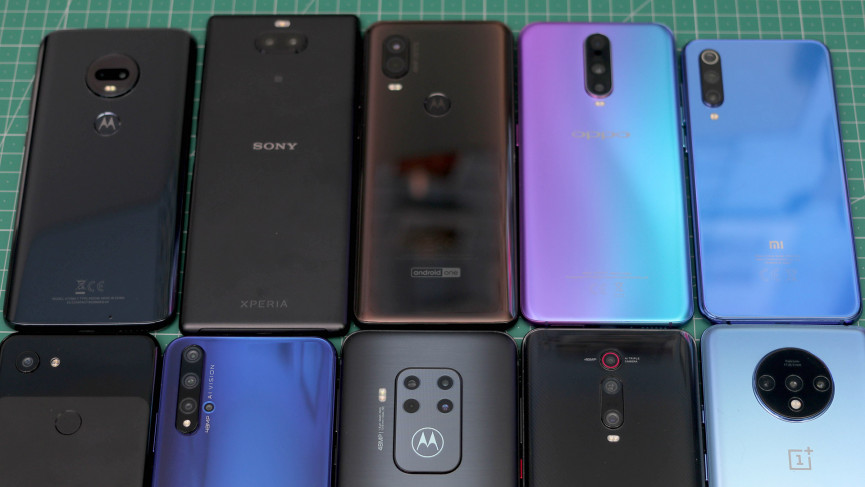
Photos and videos it captured were consistently good across its focal lengths in our tests, and Honor loads up plenty of shooting modes within its camera UI. Additionally, video recorded on it is stabilised well across resolutions and the phone’s power, design and battery life come together impressively.
If you’re thinking about picking up any Honor or Huawei phone, it’s worth noting, Honor is a Huawei company and, well, it’s complicated.
Huawei has faced fire from the US government and been put on a blacklist, so US companies like Google can’t trade with it. In turn, its upcoming phones, including the Mate 30 Pro, won’t have access to Google’s services out of the box. These include Play Store, Maps, YouTube and Gmail. It’s a huge deal.
Huawei and Honor have promised to keep existing phones like the Honor 20 up to date with security and software updates for the foreseeable.
No timeframes for continued support have been given, but this isn’t uncommon. Unless a phone ships with Android One, which guarantees three years of security updates, it really is up to manufacturers how long they keep a phone ticking over with new updates.
So while the Honor 20 is a fantastic camera phone, whether or not you pick one up isn’t quite as simple a decision as it is for the other phones on our list.
Moto G7 Plus - Best on a budget
Specs: Dual camera - 16MP wide angle (f/1.7) + 5MP depth sensor
The Moto G7 Plus is a safe bet smartphone on a budget. It costs less than £250 and still delivers dual-camera depth-sensing smarts, captures 4K video and has a great big display, not to mention a smooth, clean interface.
It is one of the weakest camera phones on-test, which isn’t a surprise given its price, with night time and lowlight shooting being the areas it struggles the most. Having said that, it was a solid performer in good lighting, and it was one of the best at capturing portrait mode effects for inanimate objects.
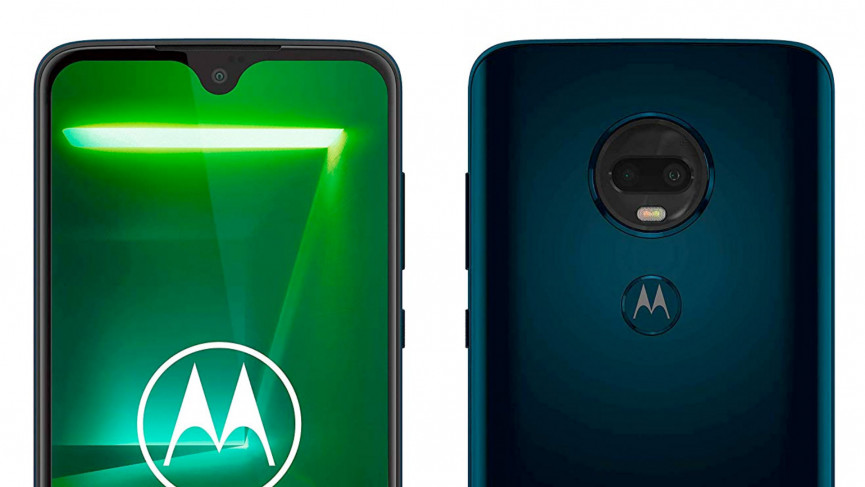
Shipping with a case in the box, incredibly fast charging for a phone of its price and a beautifully stock version of Android, while it isn’t a midrange camera phone king, the Motorola One Zoomstill represents very good value for money.
Motorola One Vision - Most affordable 48MP phone
Specs: Dual-camera - 48MP wide angle (f/1.7) + 5MP depth sensor
The Motorola One Vision has a long 21:9 display like the Sony Xperia 10 Plus, but at £80 less, it’s definitely our widescreen choice of the two.
The One Vision’s primary camera is decent for the price. When the light is right, it’s able to grab a fair bit of detail, despite the fact its 48MP sensor’s shooting resolution is capped to 12MP. It has a dedicated night mode that performs respectably at night when shooting landscapes, but struggled indoors in our low light portrait test.
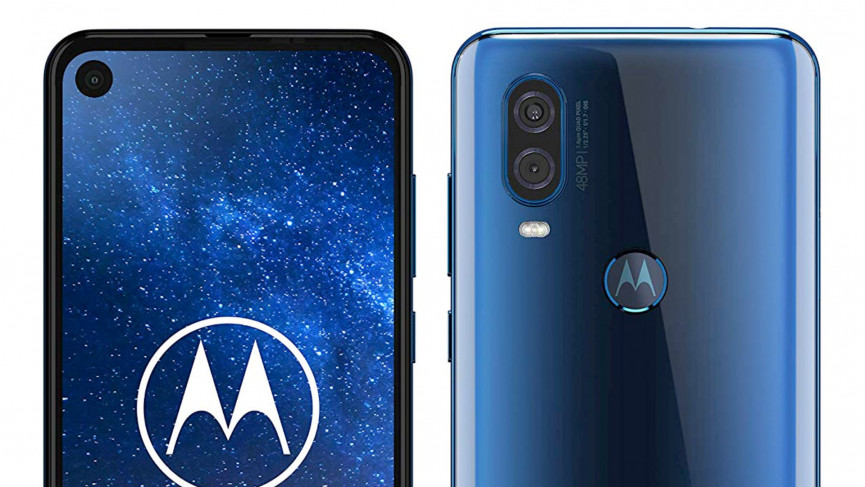
Dive into the settings and you’ll see manual modes, a colour picker so you can create dramatic black and white photos with one colour-popping though, as well as your standard portrait and panorama shooting modes.
Additionally, the One Vision can shoot ultrawide better-than-HD video at 1632p, taking full advantage of that bold display. And its excellent stabilisation holds everything together beautifully.
Our Motorola One Vision review device was provided by Vodafone. Visit a Vodafone store to try one out for yourself, with prices starting at £28 per month.
Motorola One Zoom - Best for Instagram-ready snaps - £379
Specs: Quad-camera - 48MP wide angle (f/1.7) + 8MP 3x zoom (f/2.4) + 16MP ultrawide (f/2.2) + 5MP depth sensor
There are plenty of flagship features dotted across the Motorola One Zoom. It has a huge 4000mAh battery that easily gets it through a full day, its screen is Super AMOLED, so delivers bright, saturated colours and deep dark blacks, and the metal frame and glass back feel solid and rich in the hand.
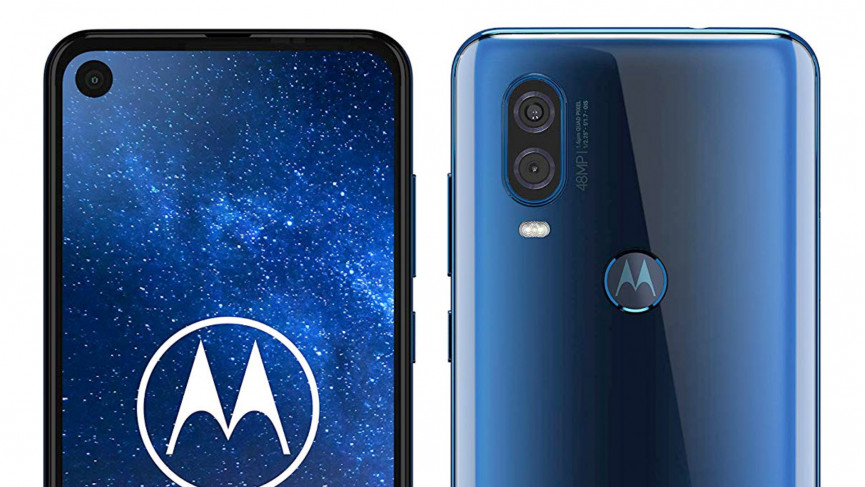
Its camera is also pretty special. It delivers a huge amount of versatility, and while it didn’t win any of our tests outright, it was a solid performer in each with no major shortcomings. Motorola's image processing is less subtle than the likes of Google and Xiaomi though, so if you like your pictures loaded up with punch and ready for Instagram, the One Zoom could be for you. But if you prefer nuance and editing photos a bit yourself, you might want to look elsewhere.
OnePlus 7T - Best screen, design and specs - £TBC
Specs: Triple camera - 48MP wide angle (f/1.6) + 12MP 2x zoom (f/2.2) + 16MP ultrawide (f/2.2)
The OnePlus 7T might not be the flagship in the 7T-series - that title’s expected to go to the 7T Pro, likely launching in October, but the vanilla 7T is a stunning smartphone to look at. Its Fluid AMOLED screen has a 90Hz refresh rate, so is smoother than your typical handset, and with a 20:9 aspect ratio, it’s a bit longer too.
The matte frosted finish on the back of the 7T is also a welcome change after the glossy OnePlus 7, and the round centrepiece housing the three cameras looks very cool too.

Like the Mi 9T Pro, the OnePlus 7T came second or third in most of our tests. It excels in low light and creates a solid bokeh effect too. The 7T’s 4K video also looks excellent, and a Super Macro mode lets you get you up close and personal with your subject, however small it might be.
The flagship Snapdragon 855+ processor is also tailored for gaming, and with stereo speakers and Warp Charge for great sound and a very fast power pick-me-up, it’s without a doubt the best overall phone on-test, even if its camera didn’t beat the competition.
Oppo RX17 Pro - Best for impatient battery chargers - £359
Specs: Triple camera - 12MP wide angle (f/1.5-2.4) + 20MP (f/2.6) + ToF depth sensor
Oppo’s RX17 Pro is a confusing phone. Its gradient finish looks like a cartoon unicorn's mane, it has two (yes, two) batteries, and despite the fact there are three cameras on its back, it only offers up one focal length. Strange.
In other words, it has no optical zoom, nor does it pull you back to an ultrawide angle. One thing it does have, which no other phone in our list does is a variable aperture, just like the Samsung Galaxy S10, so can swap between f/1.5 and f/2.4.

While its camera always performed well in our tests, it never shone through from a versatility point of view, and didn’t quite have the reliability of the Pixel 3A. That said, the RX17’s design is seriously premium, more so than the 3A's. It also has a larger AMOLED screen and thanks to those two batteries and Oppo’s VOOC charge, it powers up to 40% in just ten minutes.
The RX17 also includes an under-display fingerprint scanner and an ample 128GB storage, it can record 4K video video, has an upsettingly sharp 25MP selfie camera and features Gorilla Glass 6 protection, so is a bit hardier than most phones in under £400.
While it might not excel from an imaging point of view, therefore, its specs are still respectable.
Xiaomi Mi 9 SE - Best for small phone fans
Specs: Triple camera - 48MP wide angle (f/1.8) + 8MP 2x zoom (f/2.4) + 13MP ultrawide (f/2.4)
Xiaomi’s Mi 9 SE is small, premium and affordable. That’s a combination you don’t see too often, and it’s exactly why we’re so smitten with it. The SE’s design is rich, with a glass back and front, combined with a cool, rounded metal frame. It’s hand-holdable, handsome and very light on bezels, so Xiaomi has squeezed in an almost 6-inch screen, despite the phone's small footprint.

Its cameras are no slouches either. The 48MP main sensor can shoot at full-resolution and capture stellar amounts of detail if the lighting is on-point. In the dark, it’s better than the Xperia 10 Plus or Moto G7 Plus, but it just can’t stack up to the best out there. If you don’t mind whacking it on a tripod or resting it on a steady surface though, you can go manual and get fantastic low light shots, and with 4K video capture, it’s also a decent camcorder too.
Combined with smooth performance, a zingy Super AMOLED screen and excellent battery life, even if it isn’t the best camera phone on-test, it’s probably the best value small phone around right now.
One to avoid
Sony Xperia 10 Plus - One to avoid (Argos)
Specs: Dual-camera - 12MP wide angle (f/1.8) + 8MP 2x zoom (f/2.4)
The Xperia 10 Plus is the hardest phone to recommend on this list thanks to its lofty price. Don’t get us wrong, there’s a lot to love here, not least of all that huge 6.5-inch 21:9 Full HD+ display, uninterrupted by notches. Sony’s UI is also tasteful, and the phone’s side-mounted fingerprint scanner is both convenient and responsive.

That said, it’s also an overpriced plastic phone with a mediocre camera and underpowered internals. Sony’s bokeh mode needs serious revising if it wants to compete. The detail it captures is exceptionally weak, and the low light capabilities.


